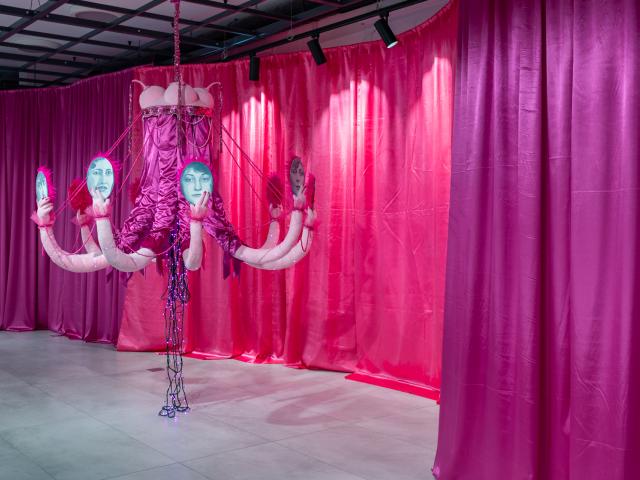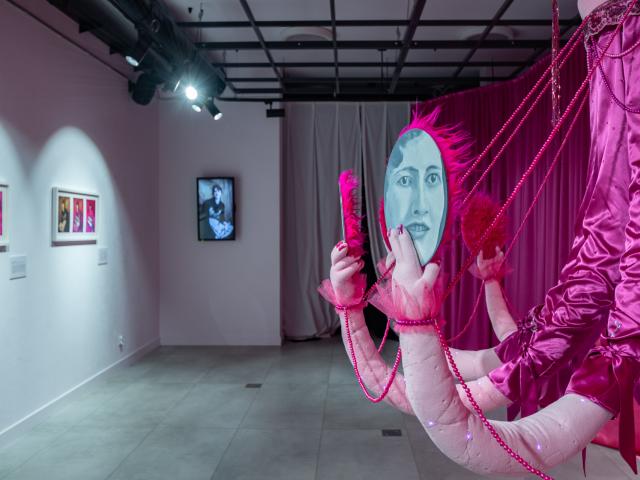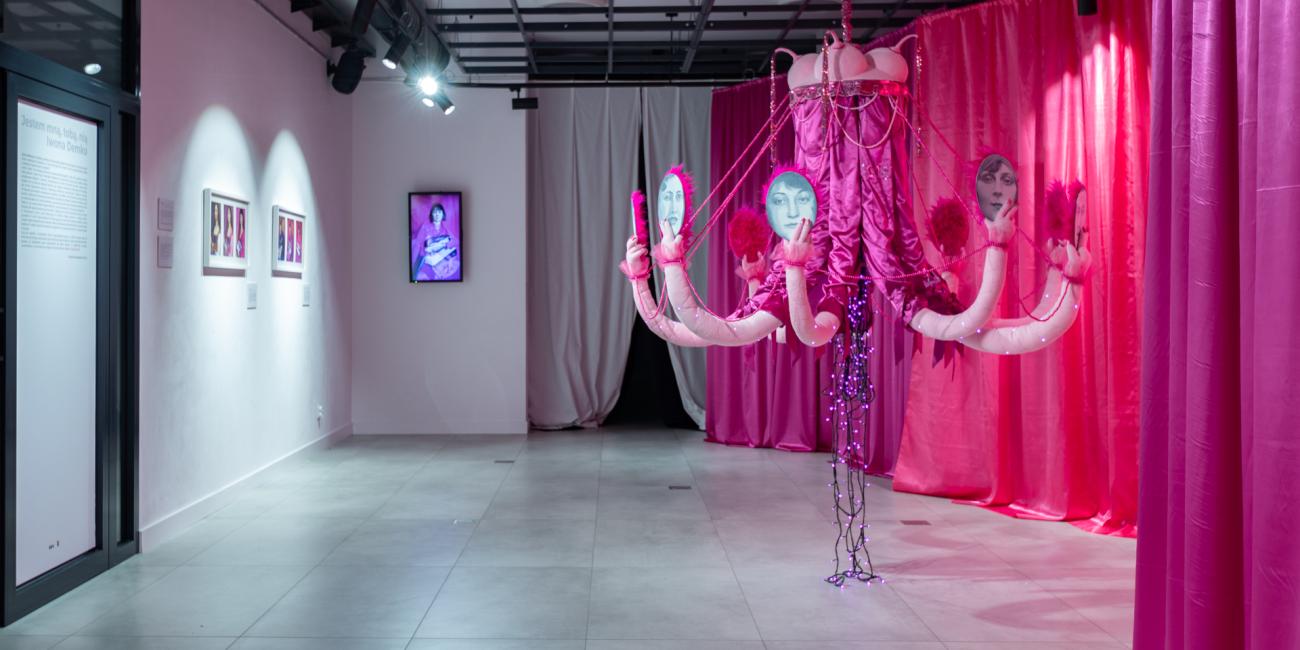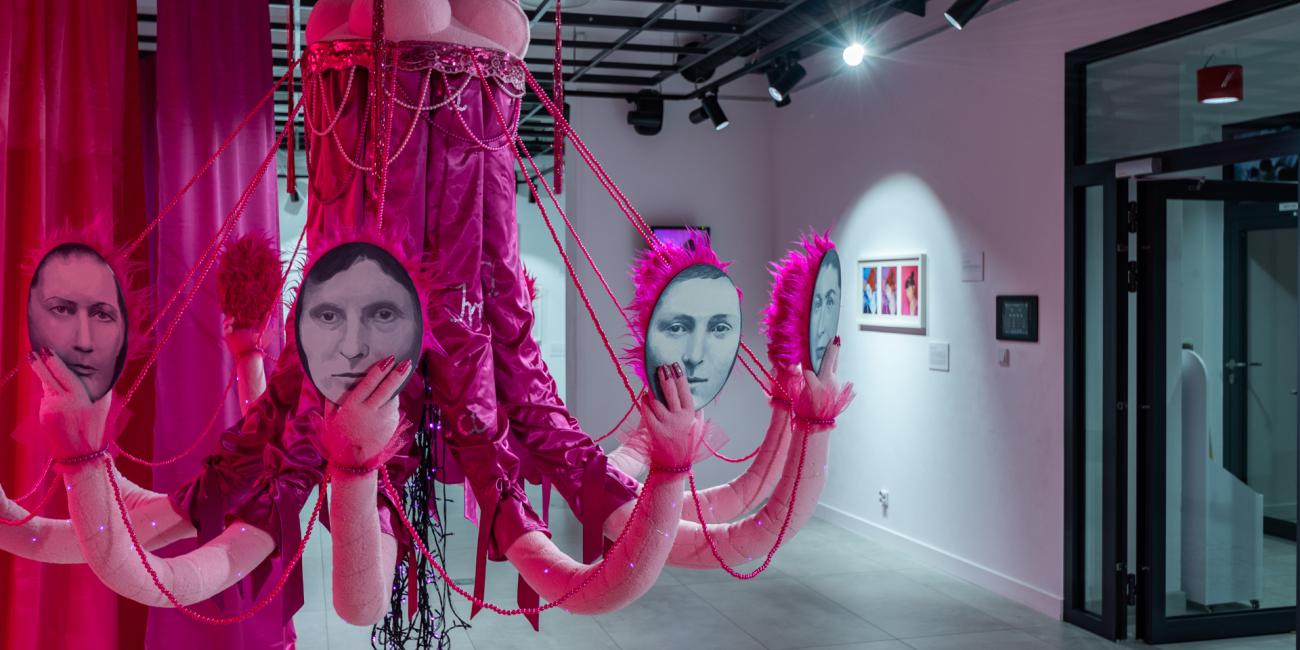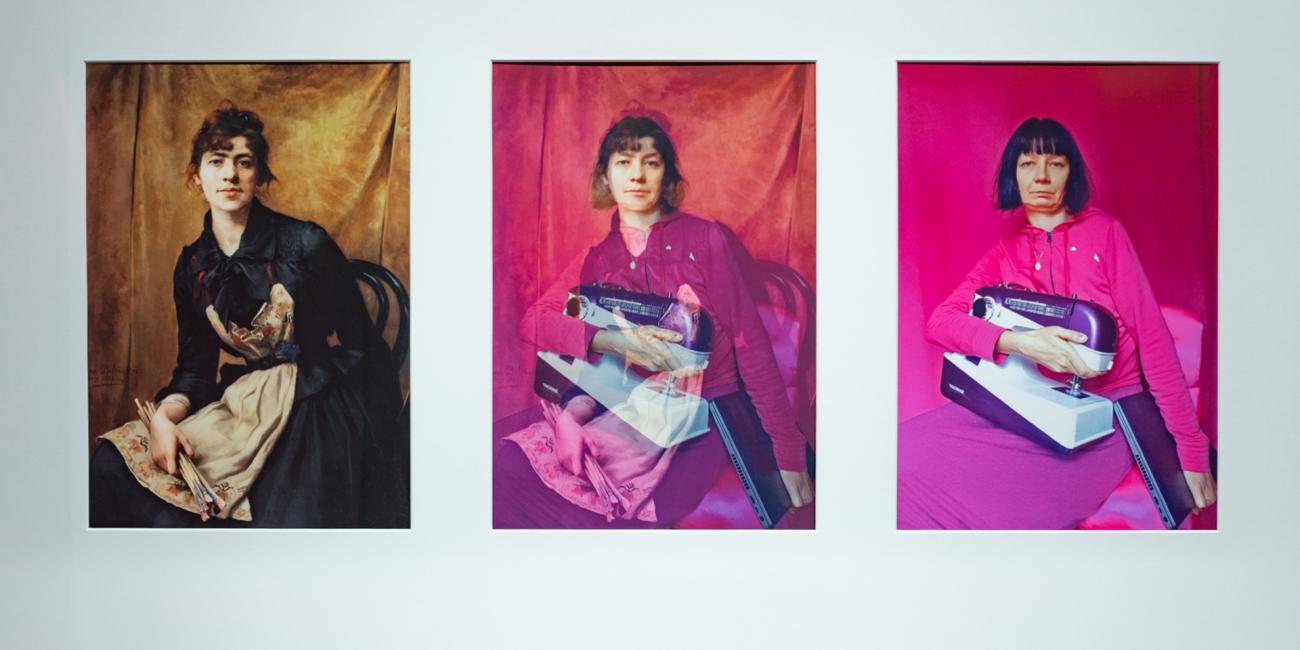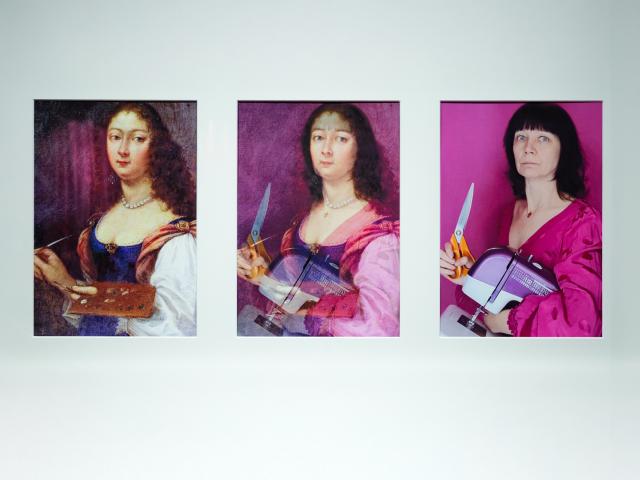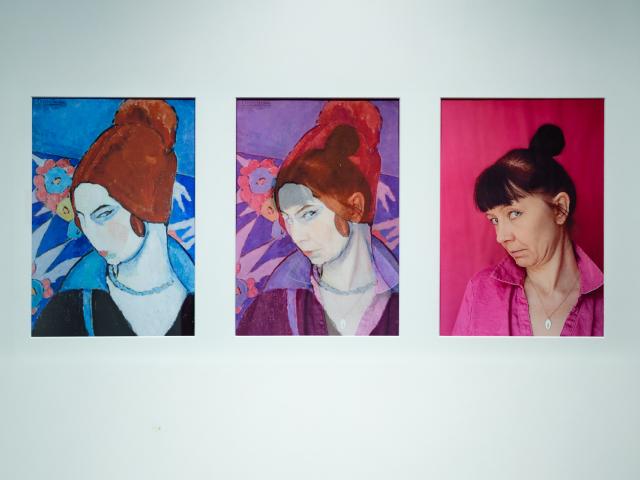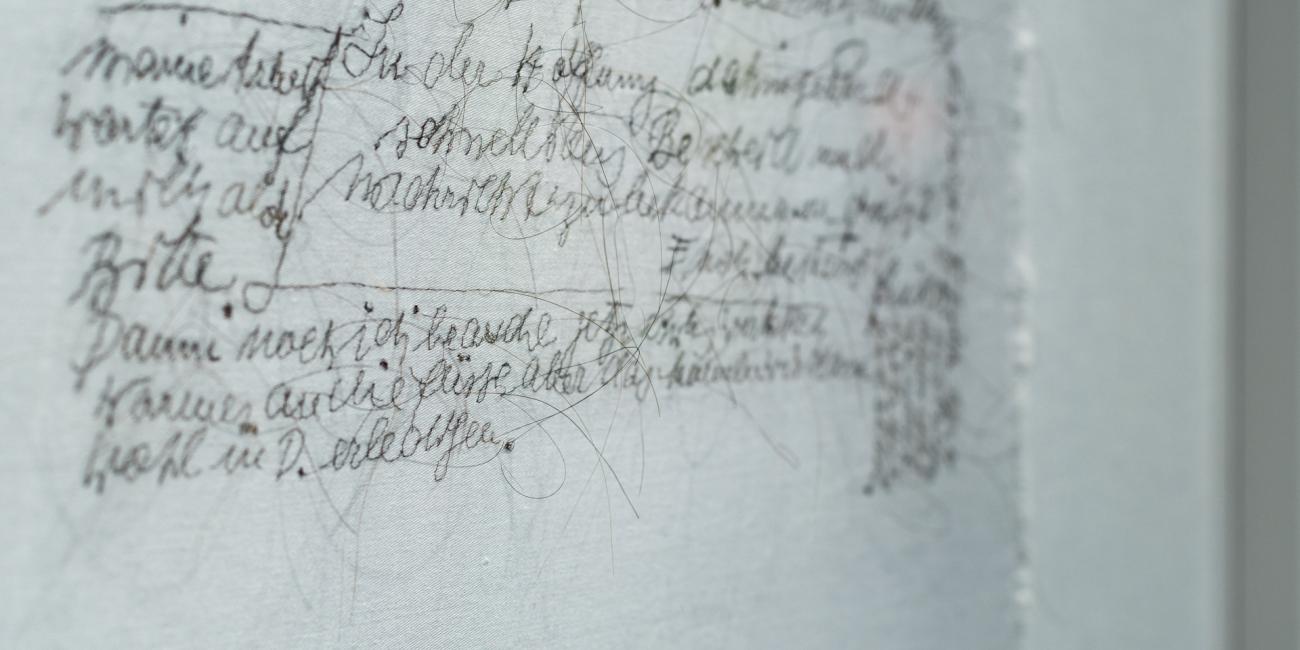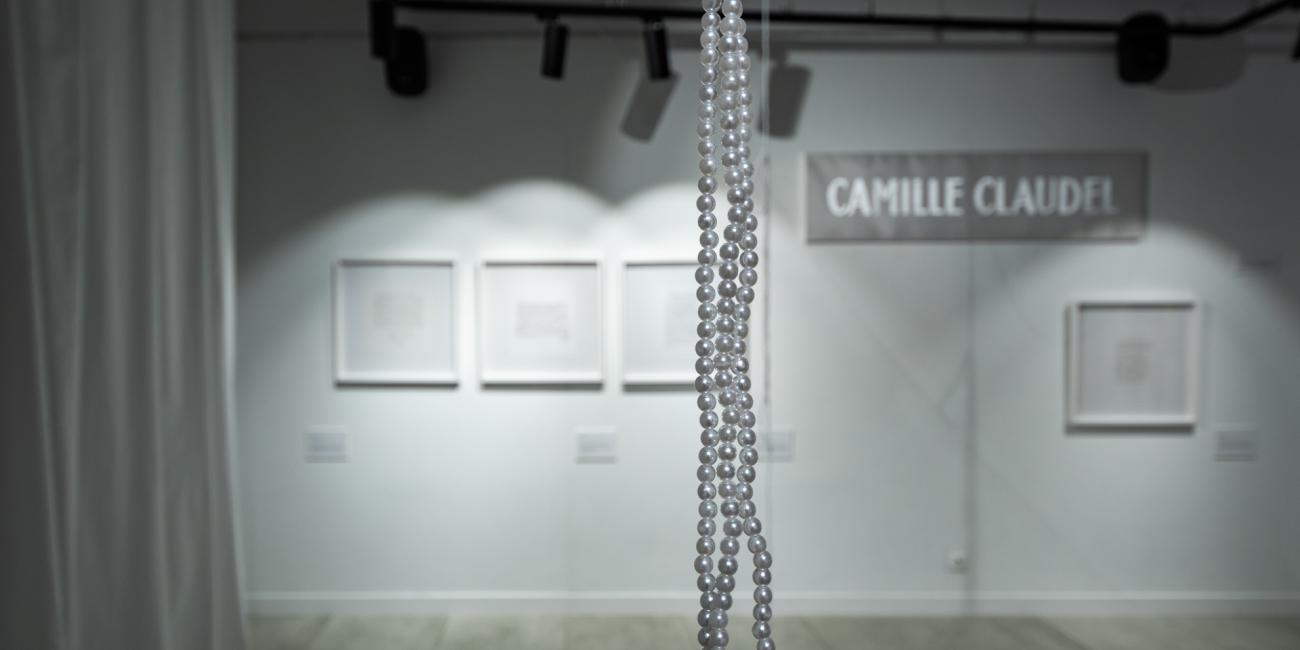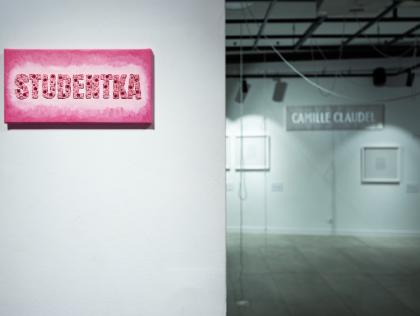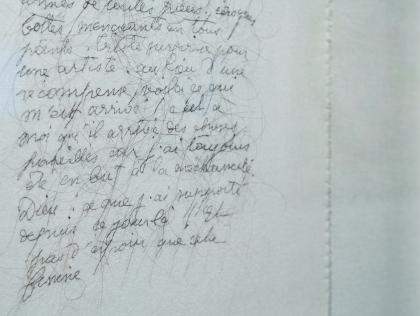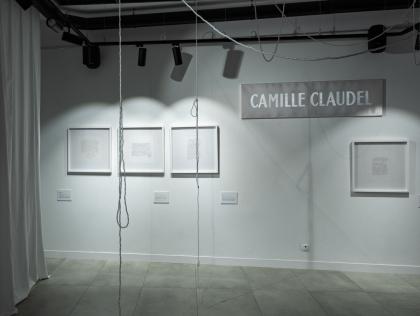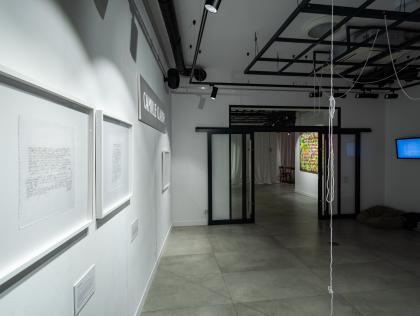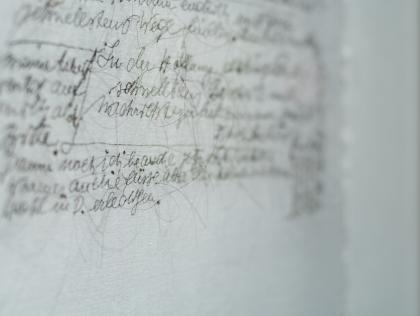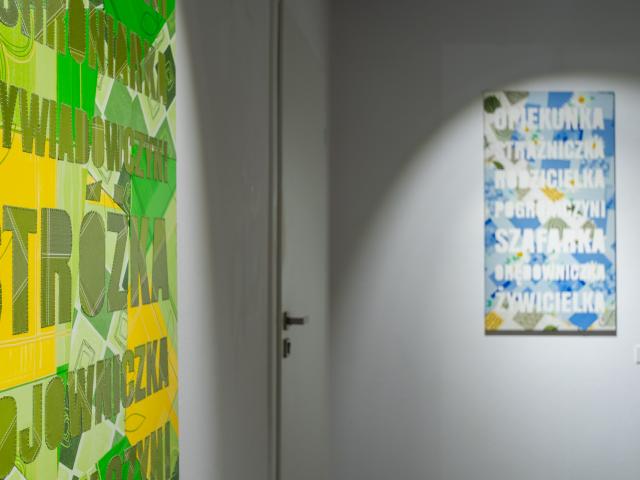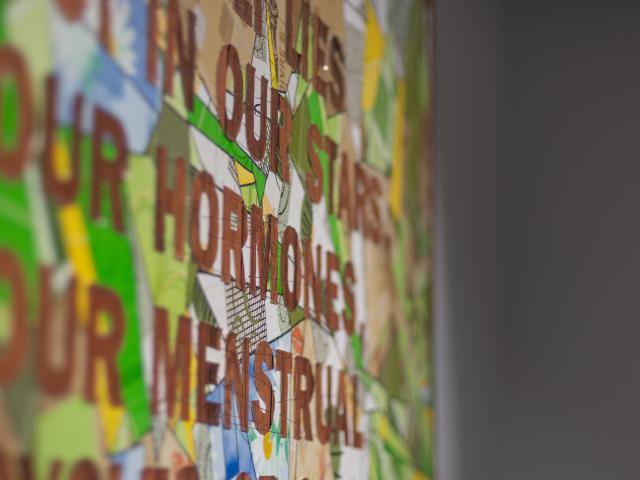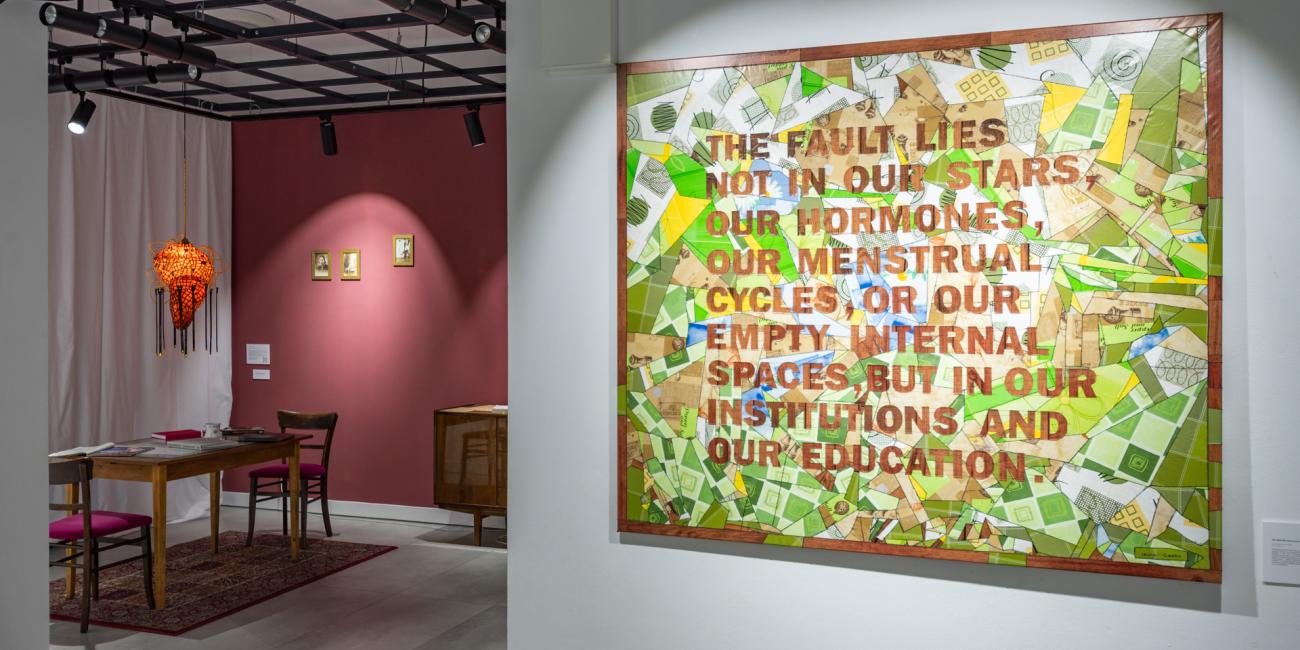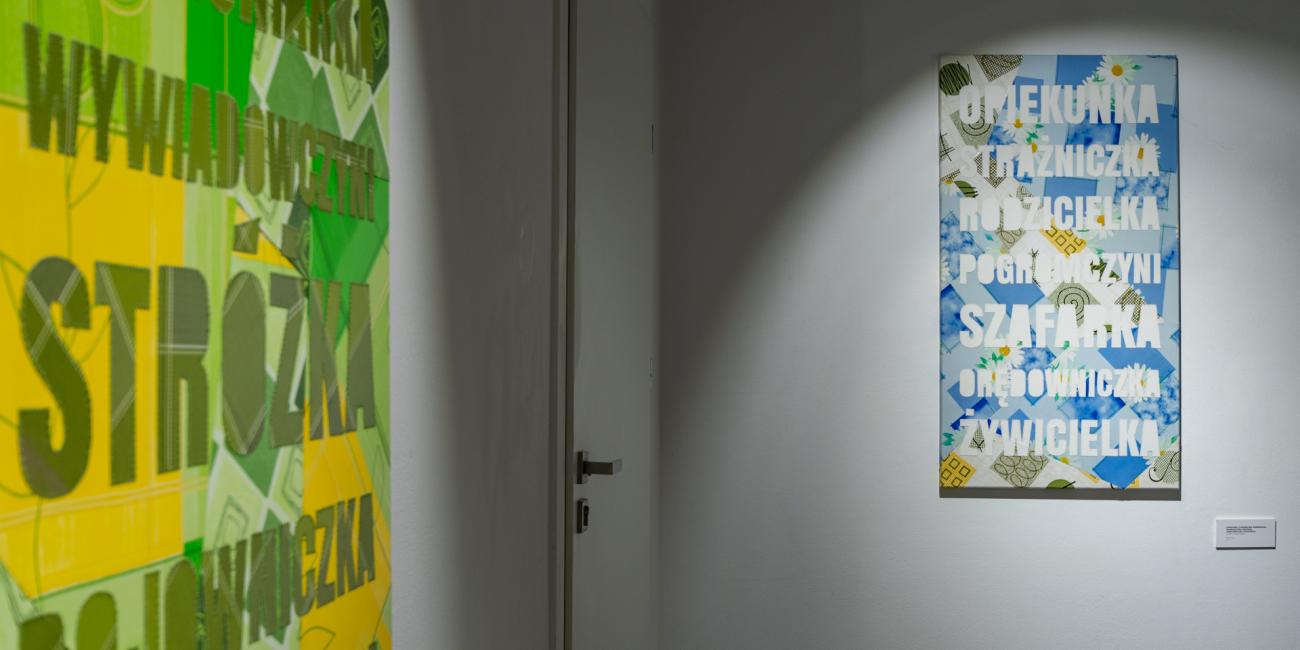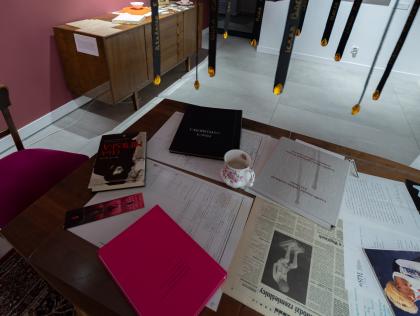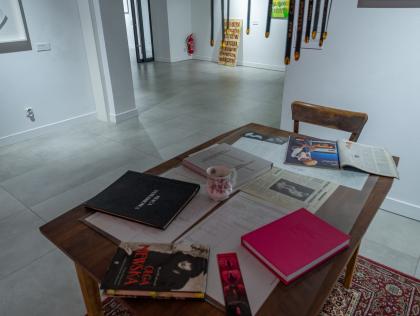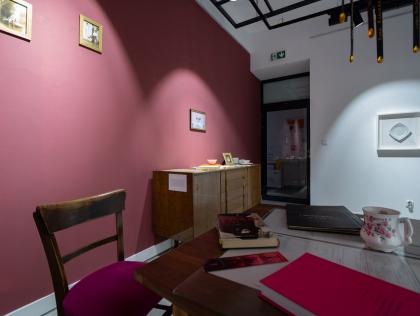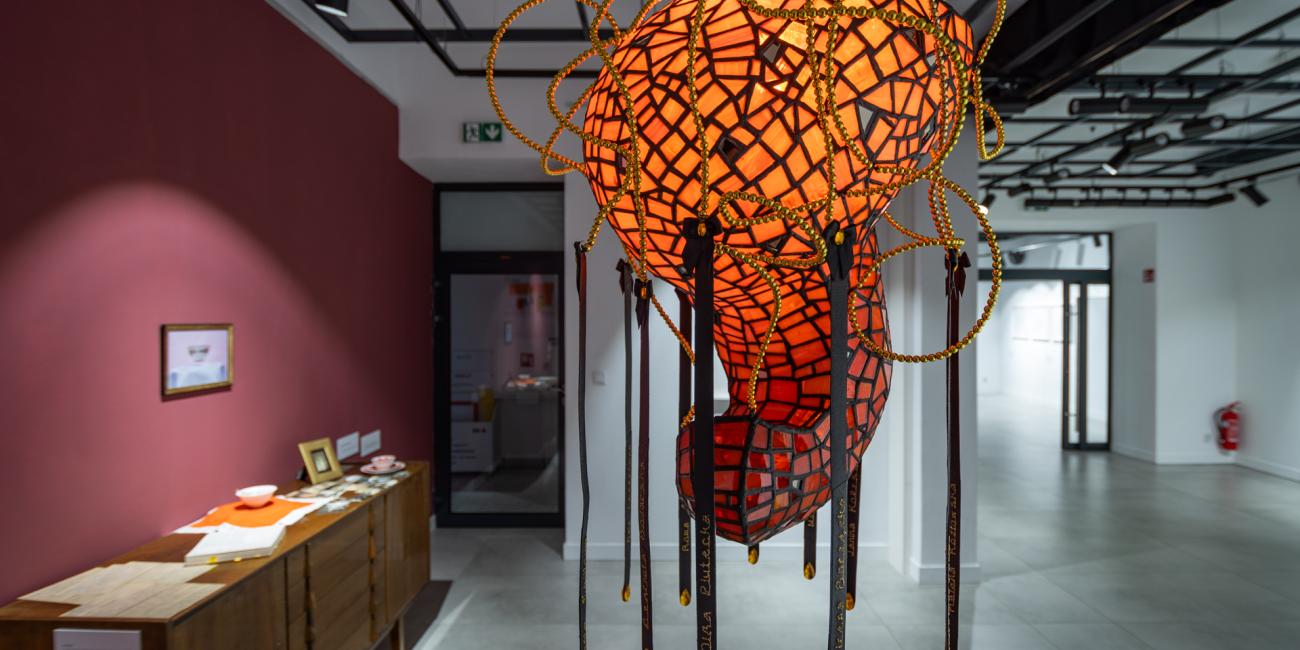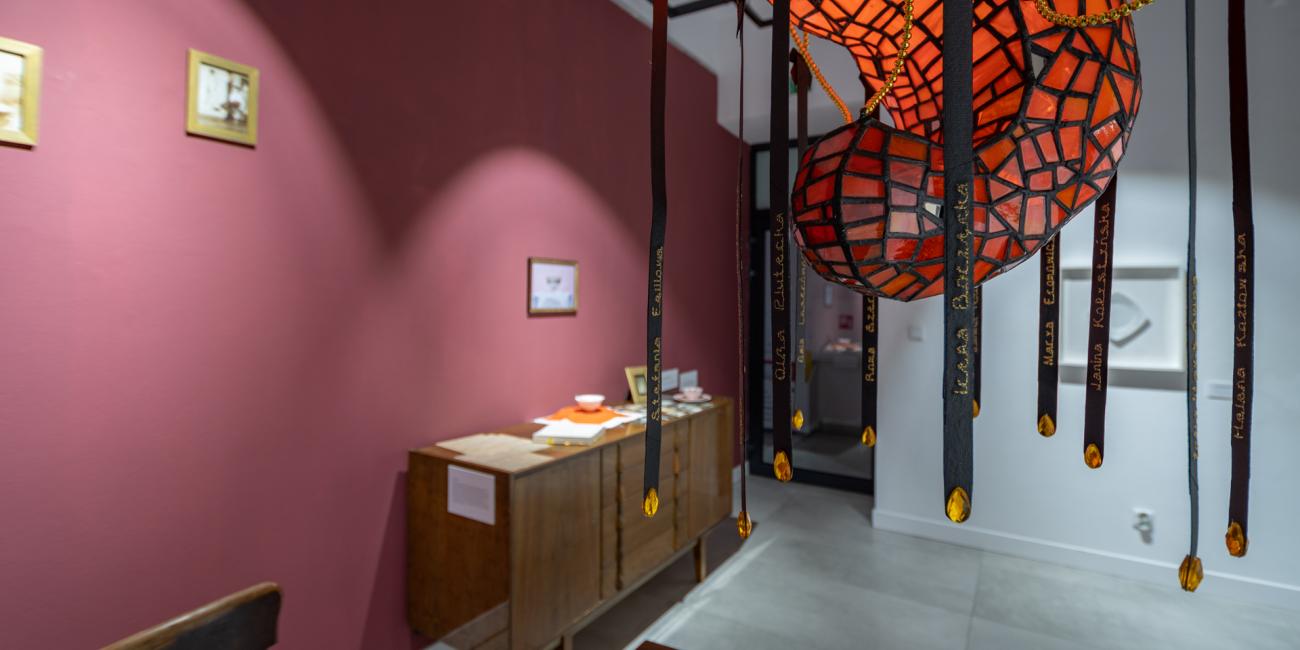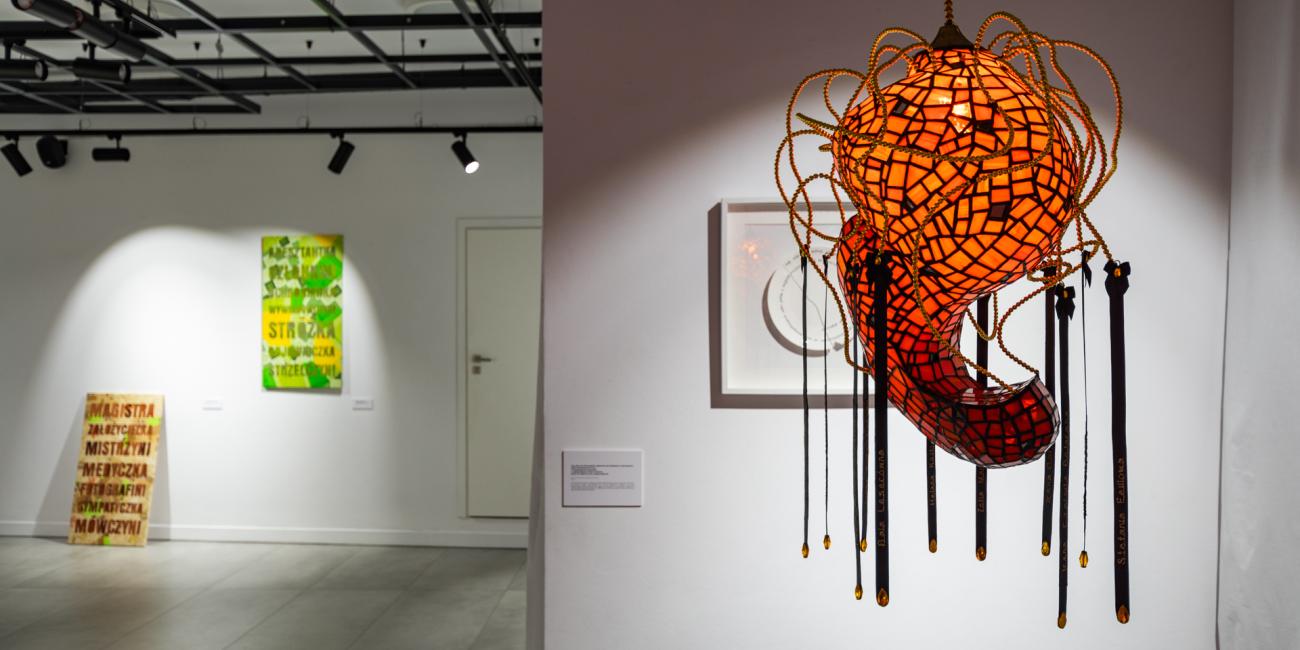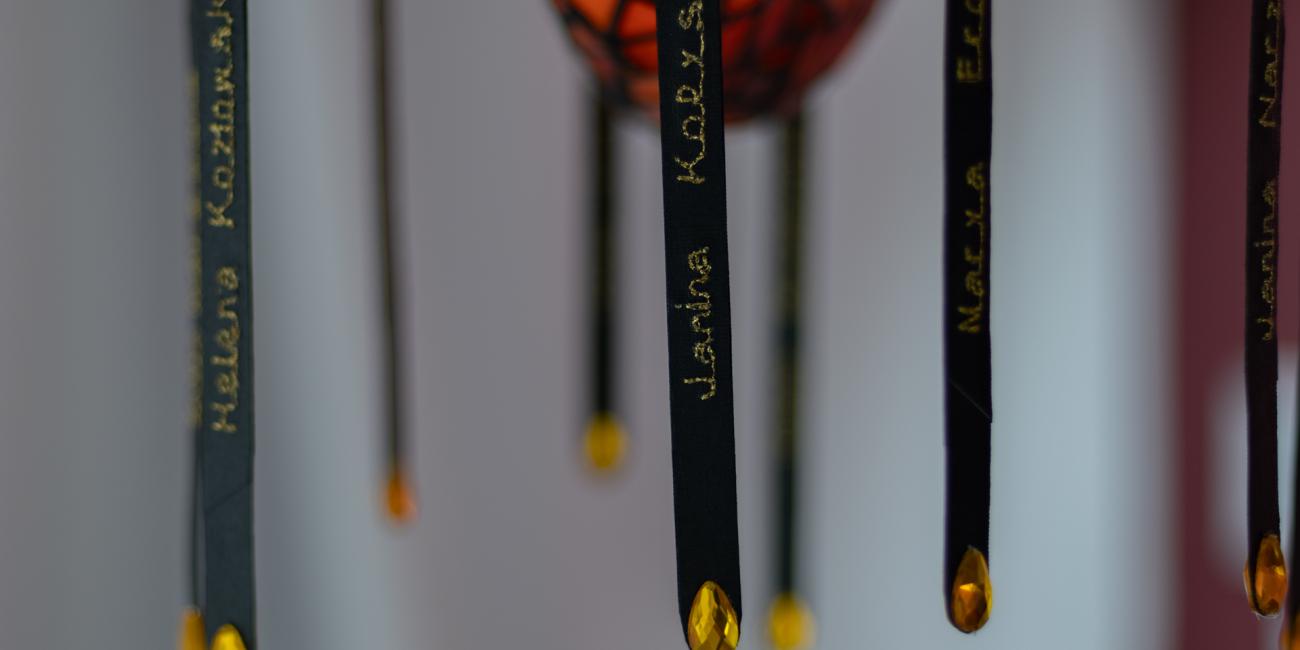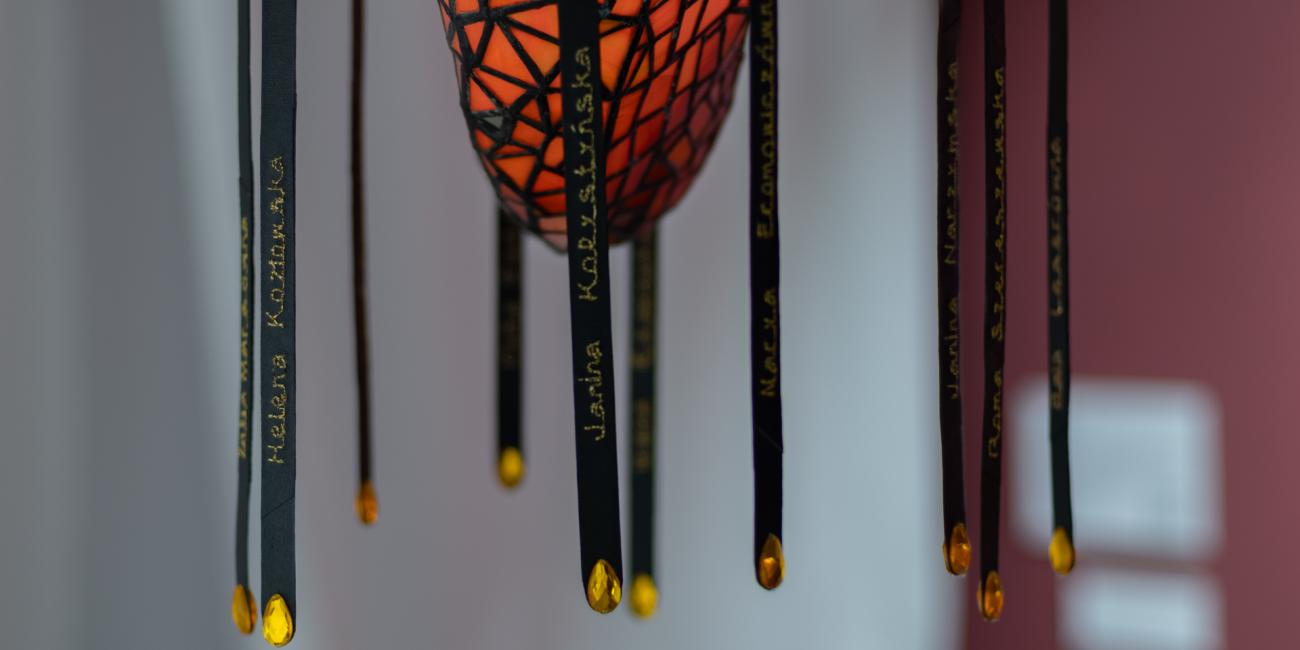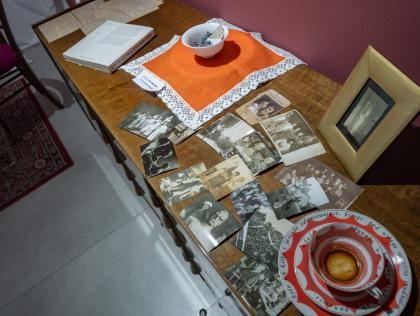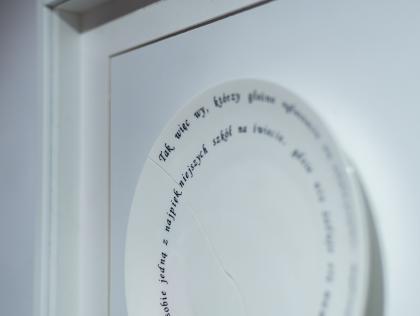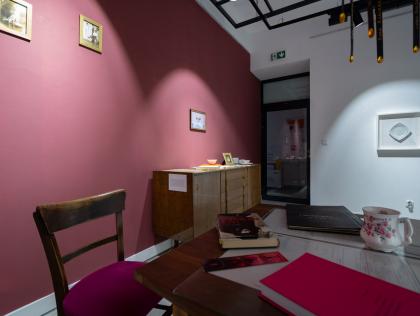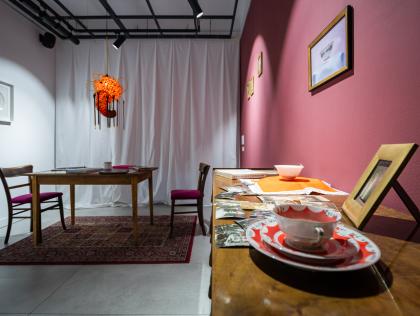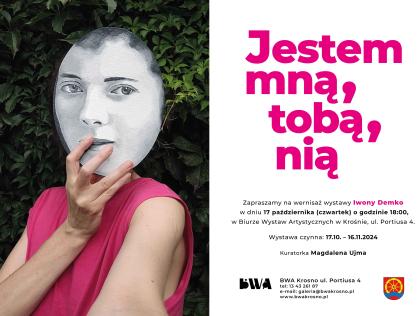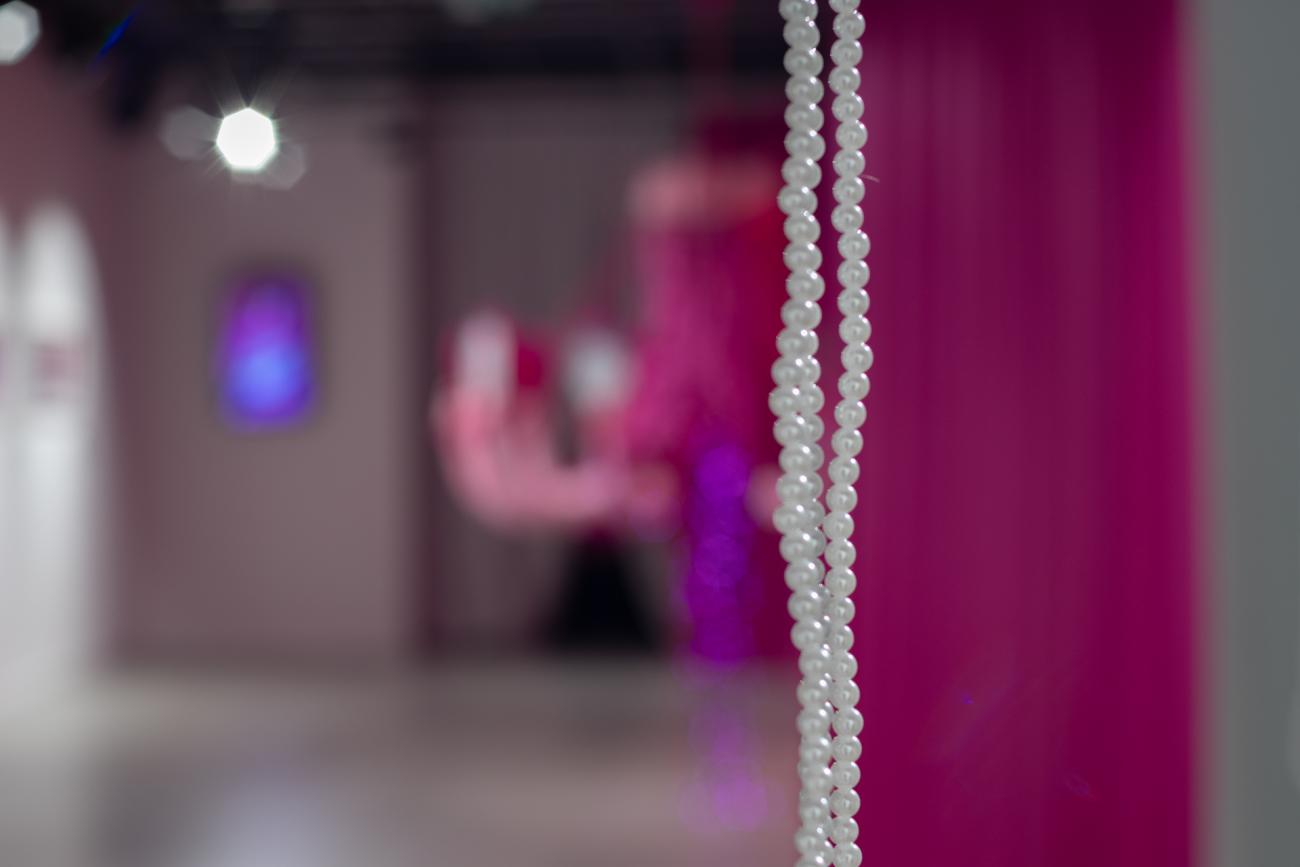
Iwona Demko — I am me, you, her
BWA Gallery in Krosno / ul. Portiusa 4 / Krosno
Jestem I am me, you, her / Iwona Demko / 17.10-16.11.2024
opening 17.10.2024 godz. 18.00
curator: Magdalena Ujma
Iwona Demko is a sculptor, professor at the Academy of Fine Arts in Kraków, curator of contemporary art exhibitions, researcher in the field of feminist herstory of art, popularizer of knowledge about unfairly forgotten female artists.
She creates sculptures and other spatial objects, uses photography and collage, film, fabric applications, embroidery, food and many other materials. The common denominator of her works is the connection with the sphere attributed to women, with home and privacy. Her trademark is the color pink, which the artist wears on herself, in her own clothes, as well as in her professional activities. Pink is considered a frivolous, childish and girlish color. The artist "disenchants" it and adds seriousness to it. In pink ermine, she played the role of the Rector of the Academy of Fine Arts, for example. For her, the fundamental role is played by contact with the recipients, reaching the audience. All of her activities, regardless of whether it is tracking traces of the matriarchal cult, searching for the first female students of the Academy of Fine Arts, or the difficult problem of trafficking women, are characterized by openness to conversation, accessibility.
The exhibition is a summary of her work. It is held on the 30th anniversary of her graduation from the State High School of Fine Arts in Krosno. The artist returns to the place of her beginnings. It was at that time that she encountered the figure of the sculptor Camille Claudel, who fascinates her to this day. Thanks to her, she decided to study sculpture. All of Demko's later work stems from this meeting. It is thanks to Claudel that Iwona Demko does not agree to the marginalization of the role and place of female artists in culture.
The time she spent at the Krosno high school began a process that resulted in her becoming a feminist artist and activist. It gave her the motivation and strength to act, as well as an experience that made her realize the most important values for herself. These are solidarity, empathy and sisterhood. And these are precisely what are expressed in the title of the exhibition "I am me, you, her".
On the candlestick
Chandelier of women who were the first to study at the Academy of Fine Arts in Krakow / object, 200×205×205 cm, 2024 / oil portraits, sponge, wadding, fleece, satin, artificial stones, artificial pearls, PEX pipe, LED lights on a wire, angel hair, sequins, tulle, artificial fur, nail art
The chandelier is a tribute to all the first female students of the Academy of Fine Arts in Krakow. In my archival research, I found 21 names. This list is certainly not complete, as some of them studied before women were officially admitted to the academy, and therefore were not recorded in the university archives. Ten of them were included in the chandelier. These are portraits painted by me based on specific archival photos that I managed to find. These are images of protagonists who paved the way for subsequent female artists. One of those who drew from their courage to study at an art school is me – a graduate and currently a professor at the Krakow university.
In my job, “being in the spotlight” means being the center of attention, being the object of interest.
The portraits include: Zofia Baltarowicz-Dzielińska, Izabela Polakiewicz, Olga Niewska, Zofia Rudzka, Helena Loria, Natalia Milan, Maria Gutkowska-Rychlewska, Halina Miączyńska, Izabella Koziebrodzka and Janina Reichert-Toth.
From the series I Am Me, You, Her
photographs 2021-2024
The identity of contemporary female artists is created based on the models of those who came before them. However, it is difficult to build it if there have been no female artists in the history of art. In such a situation, we often use male models, adopting them as our own, cutting ourselves off from what is defined as feminine. This cutting off influences our choices of means of expression and topics. Gender socialization requires us to seek out such models and create them.
Anna Bilińska-Bohdanowiczowa, Self-portrait with a palette, 1887 / Iwona Demko, Self-portrait with a sewing machine and laptop, 2021
Anna Bilińska-Bohdanowiczowa was born at a time when women had no access to artistic education. In order to educate themselves, they had to go abroad to study in private schools designed for them. She was the first Polish artist to choose Paris instead of Munich as her place of study. She dreamed of founding a school for women in Warsaw upon her return. Unfortunately, her premature death prevented her from realizing these plans.
Autoportret z paletą from 1887 was exhibited at the Paris Salon and received a gold medal. It stood out against the background of representations of that time for its lack of idealization. Bilińska showed herself in work clothes – an apron dirty with paints. She did not beautify her face, did not comb her hair. She placed emphasis not on appearance, but on presenting herself at work. Critics interpreted these procedures as an expression of sincerity and professionalism, seeing in her way of painting “the masculine power of the brush”. Perhaps if she had presented herself as beautiful, her painting skills would not have been appreciated.
The artist sent the painting to the Polish Art Exhibition in Kraków, and from there to the Warsaw Society for the Encouragement of Fine Arts. She won more awards there. The self-portrait brought her fame and commissions.
Elisabetta Sirani, Self-portrait, ca. 1660 / Iwona Demko, Self-portrait with a sewing machine and scissors, 2024
Elisabetta Sirani was a painter and drawer. She was born in Bologna in 1638. She could have become a painter because her father Giovanni Andrea Sirani (1610-1670) was a painter and art dealer. She studied in his workshop. She was his assistant, although it soon turned out that she had more talent than him. She became independent at the age of 17, when her father fell ill and she had to replace him to earn money for the family. She also ran a painting studio for women, which was an unusual idea at the time. Her patron was Duke Cosimo III de' Medici. In 1660, she was accepted to the Academy of St. Luke in Rome. She put her signature on buttons, necklines or lace in her works. During her short life (she lived only 27 years) she created about 190 works. When she died in 1665, Bologna organized a public funeral in her honor. Her sisters Anna Maria and Barbara were also painters.
Jeanne Hébuterne, Self-portrait, 1916 / Iwona Demko, Self-portrait, 2022
Jeanne Hébuterne was Amedeo Modigliani's partner. When she met the painter, she had been studying art for two years at the École des Arts Décoratifs and the Académie Colarossi in Paris. She was 19 and Modigliani was 33. Their union produced a daughter.
Valerie Didier Hess of Christie’s said of her: “As far as I know, there are only about twenty-five paintings by Hébuterne in the world (...). She died so young that she did not have time to establish a reputation as a painter.” In addition to her oil paintings, she left behind drawings, watercolours and gouaches. She never had her own exhibition. She had no one to support her artistic aspirations, help her promote herself and sell her works.
Two days after Modigliani's death, she jumped out of a window on the fifth floor of her parents' house. She was 21 years old and 8 months pregnant with the famous painter's second child. After her tragic death, her heirs kept her work hidden for many years. It was not until 2000 that, thanks to her granddaughter and art historian Christian Parisot, Hébuterne's paintings were first presented at an exhibition in Venice. She is increasingly referred to not only as Modigliani's partner, but also as a painter whose premature death prevented her from showing her full potential.
Mon cher Paul
hand embroidery with hair on cotton, cotton and linen fabric, hair, 63×63×3,5 cm, 2022-2023
The original letter is located in the Bibliothèque Nationale de France in Paris.
Camille Claudel to brother Paul Claudel from the Montfavet asylum, March 3, 1927:
(…) what happiness it would be if I could return to Villeneuve! That beautiful Villeneuve, which has nothing like it on earth! It has been 14 years since I had that unpleasant surprise, seeing two thugs enter my studio, armed with everything possible, with helmets on their heads, in boots, threatening everyone. A sad surprise for an artist: instead of a reward, this is what happened to me! It is to me that such things happen, because I have always lived in arrogance and anger. My God, what I have suffered since then! And no hope that it will end.
Mon cher Paul II
hand embroidery with hair on cotton, cotton and linen fabric, hair, 63×63×3,5 cm, 2024
The original letter is located in the Bibliothèque Nationale de France in Paris.
Letter from Camille Claudel to brother Paul Claudel from the Montfavet asylum, March 3, 1927:
Whenever I write to my mother to take me to Villeneuve, she replies that the house is in ruins. That is better from every point of view. However, I am in a hurry to leave this place. The longer it lasts, the more difficult it is. New residents are constantly arriving, we are one on top of the other, crazy, as they say in Villeneuve, it is as if everyone is going mad. I do not know if you intend to leave me here, but it is very cruel to me!
Dear Kazik! I beg you with all my heart
hand embroidery with hair on cotton, cotton and linen fabric, hair, 63×63×3,5 cm, 2021
The original letter is located in the Jagiellonian University Archives.
Letter from Hela Kozłowska-Dąbrowska to her brother Kazimierz Kozłowski from a psychiatric facility in Kraków, 1935:
Dear Kazik! Sunday
I beg you with all my heart, come to Krakow and save me. Zosia and Włodek have packed me into a home for the mentally ill in Jugowice near Krakow, near Borek Fałęcki. Take a taxi straight from the station and come for me, demanding that I be handed over, but that you take me to your place. Please take the money to pay for my several days of stay here, because I don't want the military to return it, because it would hurt Franek's reputation. Please come right away and straight to me if you have even a little feeling for me. Hela
I have to say
hand embroidery with hair on cotton, cotton and linen fabric, hair, 63×63×3,5 cm, 2023
The original letter is in the Prinzhorn Collection in Heidelberg.
Letter from Elfriede Lohse-Wächtler to her parents from the psychiatric hospital in Heidelberg, September/October 1932:
I must say that I can no longer stand it with homesickness, or as you have known for a long time, my greatest dream is to go further south. And this must absolutely come true. I would very much like to have some bread flour or oil with johannesbrot. Or maybe you could send me something home-baked? But no! There is no need! It is high time to find ways to get me out of this existence, because it is no longer bearable. Hoping to receive a quick answer and news on this matter, I send you my warmest regards,
Frieda
My work is waiting for me, so please. Besides, now I need something really warm for my feet, but tI guess we can take care of that in Germany.

The chandelier is a tribute to all the first female students of the Academy of Fine Arts in Krakow. In my archival research, I found 21 names. This list is certainly not complete, as some of them studied before women were officially admitted to the academy, and therefore were not recorded in the university archives.
Feminine forms
In the 19th century, as part of women's emancipation, when women began working in professions that had previously been inaccessible to them, a large number of feminine forms appeared. One such word was 'MAGISTRA.' (feminine form of "Magister" - eng. Master) In 1918, an announcement appeared in the 'Kurier Lwowski': 'A pharmacy in Radziechów is looking for a female master of pharmacist.' Over time, many female job titles lost popularity because they were associated with a lower social status for women. The masculine form was considered more prestigious, which is why women were (and still are) reluctant to use feminine forms.
All the feminine job titles in the paintings come from the turn of the 19th and 20th centuries. They appeared in the times of the first generation of women studying at the Academy of Fine Arts in Kraków. The word 'fotografini' comes from the autobiography of Zofia Baltarowicz-Dzielińska. In one of the paintings, all the feminine forms come from prayers.
Language not only reflects social changes, but also influences our perception of the world and imagination. Through language, we view the world; language mirrors and shapes reality. The words we use to describe the world affect how we think about ourselves. Professor Mirosław Bańko says that when we use feminine forms, we can express ourselves more precisely.
FEMALE DETAINEE, FEMALE MEMBER, FEMALE GUARD, FEMALE INTELLIGENCE AGENT, WATCHWOMAN, FEMALE FIGHTER, MARKSWOMAN
from the series History lesson
sewn oilcloth, technique: femmage (i.e. oilcloth scraps), 110 × 60 cm, 2023
FEMALE CAREGIVER, FEMALE GUARDIAN, MOTHER, FEMALE CONQUEROR, FEMALE KEEPER, FEMALE ADVOCATE, FEMALE PROVIDER
from the series History lesson
sewn oilcloth, technique: femmage (i.e. oilcloth scraps), 110 × 60 cm, 2023
FEMALE MASTER, FEMALE FOUNDER, FEMALE EXPERT, FEMALE MEDIC, FEMALE PHOTOGRAPHER, FEMALE SYMPHATIZER, FEMALE SPEAKER
from the series History lesson
sewn oilcloth, technique: femmage (i.e. oilcloth scraps), 110 × 60 cm, 2023
The fault lies not in our stars
sewn painting, femmage (i.e., scraps of oilcloth), 140 × 160 × 2 cm, 2023-2024
The fault lies not in our stars, our hormones, our menstrual cycles, or our empty internal spaces, but in our institutions and our education - a fragment from Linda Nochlin's famous essay from 1971, Why Have There Been No Great Women Artists. The author of the essay answers the question posed in the title of the book, making us realize that the lack of great women artists in history is the result of systemic forces, which become invisible to us because we are subjected to them from birth.
Archives
On the table and the dresser, archival materials related to the 'first' female students of the Kraków Academy of Fine Arts were placed, which I discovered through numerous research inquiries.
There are also copies of the correspondence I had with the magazine "Twój Styl" ("Your Style") 30 years ago. In 1992, an article by Rita Gołębiowska-Manford about Camille Claudel was published in its pages. The lack of access to information forced me to seek help from the author of the text. "Twój Styl" published one of my letters, in which I described the circumstances surrounding the creation of my diploma work Forgotten – In Memory of Camille Claudel, which I completed at the art high school in Krosno. It was my sculpture debut.
There is also a copy of Camille Claudel's entry in the psychiatric hospital register at Ville Evrard near Paris from 1913, which I received during a meeting at the hospital.
A catalog from the exhibition curated by Dr. Ewa Ziembińska and Alicja Gzowska at the National Museum in Warsaw Bez gorsetu. Camille Claudel i polskie rzeźbiarki XIX wieku (2023) (Without a Corset: Camille Claudel and Polish Women Sculptors of the 19th Century) with my text To Camille Claudel, who made me a sculptor, where a photograph can be found. Also, books dedicated to Camille Claudel.
Light in the darkness
object, 70×40×40 cm, 2005-2024
stained glass, LED bulb, beads, artificial zircons, ribbon, machine-embroidered on canvas with the names of the first female students of the Academy of Fine Arts in Kraków
The names embroidered on the black-painted canvas are a continuation of the list of women who were the first to study at the Academy of Fine Arts in Kraków. The names were taken from the list of female students who were the first women to complete the semester of the 1919/1920 academic year. In some cases, these are maiden names, and two women became known as artists under completely different names (they changed their identities during World War II due to their Jewish origin).
All the women were found by me through archival research, which I have been conducting since 2016. Some of the names appear on Wikipedia in articles I have authored. They can also be heard in the series Ile właściwie było wielkich artystek? (How Many Great Female Artists Were There, Really?) on Radio Kapitał, which aired from October 15, 2021, to June 3, 2022.
Names: Roma Szereszewska, Stefania Feillowa, Bala Leserówna, Janina Narzymska, Olga Plutecka, Irena Czarnota Bojarska, Zofia Marsówna, Helena Kozłowska, Janina Kopystyńska, Maria Fromowiczówna, Irena Borzęcka.
Duchamp didn’t change diapers / Pollock didn’t change diapers
porcelain decorated with ceramic decal, ready made + author's intervention, 52×52×4.7 cm, 2021
The quote comes from an interview given by contemporary artist Mierle Laderman Ukeles in 2017.
So, you, who loudly declare yourselves stronger, smarter, and more talented than us, monopolize one of the most beautiful schools in the world, where no support is spared for you
porcelain decorated with ceramic decal, ready made + author's intervention, 52×52×4.7 cm, 2021
The quote comes from a text by the painter Maria Baszkircew, which was published in 1881 in the French newspaper Obywatelka. Baszkircew was among the group of female artists who were the first to engage in painting as a profession. Their education could only take place in private academies, as state universities were closed to women at that time.
They ask us with condescending irony how many great female artists there actually were. Oh, gentlemen, there were a few, and it’s astonishing, considering the immense difficulties they faced.
porcelain decorated with ceramic decal, ready made + author's intervention, height 6.5 cm diameter 19.5 cm, 2021
The quote comes from a text by the painter Maria Baszkircew, which was published in 1881 in the French newspaper Obywatelka. Baszkircew advocated for women’s access to state-run art academies.
How many great female artists were there, really?!
porcelain decorated with ceramic decal, ready made + author's intervention, height 10×11×9 cm, 2021
A bowl belonging to Janina Reichert-Toth, one of the first students of the Kraków Academy of Fine Arts.
photograph in a gold frame, 24.5×33.5 cm, 2021
The bowl visible in the photograph was given to me by the artist Janina Reichert-Toth’s grandniece, Karolina Grodziska. Due to an unfortunate turn of events, it was damaged. No trace of it remains – just like with many female artists.
Ghost
object, ceramics, burnt paper, levitator, fabric, 132 24×24 cm, 2020
The ghost is a memory of the now non-existent bowl belonging to the sculptor Janina Reichert-Toth, one of the first students of the Kraków Academy of Fine Arts.
The bowl contains the same card as in the video Come back, taken from my book Zofia Baltarowicz-Dzilińska. The First Female Student of the Academy of Fine Arts in Kraków, which includes a photograph of Zofia Baltarowicz-Dzielińska’s student ID. Both women studied simultaneously in the studio of Konstanty Laszczka, and later lived near each other in Lviv.
Come back
video 1’32’’, 2020
The index visible in the video belonged to Zofia Baltarowicz-Dzielińska, who was the first woman to study at the Kraków Academy of Fine Arts. She was unofficially admitted as an auditor in 1917. At that time, women were not allowed to attend university, so her presence was not recorded in the university archives. During the same period, 80 men were studying at the same institution. After three years, in 1920, Baltarowicz-Dzielińska interrupted her studies. She returned to complete her studies only in 1946, when she received a certificate of graduation from the academy. At that time, as a 52-year-old woman, she also received a student ID. Her earlier studies from 1917-1920 were also noted in it.
During her lifetime, it was remembered that she was the first female student, and she herself often reminded others of this fact. Later, this fact was recalled by her daughter, also a sculptor, Danuta Dzielińska. After their deaths, the story was forgotten. Only now, when we consciously cultivate herstory, is the memory of Zofia as the first woman to study at the Kraków Academy of Fine Arts coming back.
